Enterprises aren’t just migrating to the cloud for email and file sharing, phone systems are following the same path. The global SIP trunking market is projected to grow at a CAGR of 12.6% from 2023 to 2030, driven by the shift from legacy PRI lines to VoIP technology and unified communications platforms. For companies scaling remote work, maintaining compliance, and supporting customers across regions, SIP trunks have become the backbone of enterprise-grade communications.
Choosing the right SIP trunk provider in 2025 carries far more weight than price alone. The provider you select determines whether your business phone systems stay reliable during peak demand, whether calls are encrypted to meet regulatory standards like HIPAA or GDPR, and whether customer conversations flow seamlessly through UCaaS platforms such as Microsoft Teams or Zoom Phone. A weak choice can introduce downtime, security vulnerabilities, or hidden costs that damage customer trust and drain budgets.
This article compares the best SIP trunk providers in 2025 through a data-driven lens. You’ll see how different providers perform on reliability, security, global reach, and integration, and what matters most for your business profile, whether you’re a small startup or a global enterprise. Let’s start by looking at why SIP trunk provider choice matters more than ever in 2025.
Key Takeaways
- The SIP trunking market is growing rapidly as enterprises replace legacy PRI lines with VoIP to support remote work, regulatory compliance, and global UCaaS platforms like Teams and Zoom.
- Top providers, like DIDlogic, Twilio, Bandwidth, Vonage, and VoIP.ms, differ in global reach, security (TLS/SRTP), UC integration, support quality, and pricing transparency.
- DIDlogic stands out for international coverage, per-channel/usage-based billing, live support, and developer-first APIs; Twilio excels in flexible integrations but lacks live support.
- Choosing the right SIP provider depends on concurrency needs, regional coverage, PBX/UC platform compatibility, and the ability to meet compliance standards like HIPAA or GDPR.
- Trends like BYOC, AI-driven routing, and regulatory crackdowns on telecom fraud make SIP trunking a strategic investment, not just a commodity service in 2025.
Core Evaluation Criteria for SIP Trunk Providers
IT managers don’t choose SIP trunk providers based on marketing promises, they evaluate measurable factors that directly impact reliability, security, and long-term cost. The following criteria define the benchmarks worth comparing:
Reliability & SLAs
Downtime translates to lost revenue. Providers typically guarantee 99.99% uptime through Service Level Agreements (SLAs). Beyond the number, it’s essential to confirm whether redundancy includes geographically distributed data centers and automatic failover routing. For example, Bandwidth publishes documented redundancy across multiple U.S. regions, while DIDlogic emphasizes real-time failover routing in its technical docs.
Security
Modern SIP trunks must guard against call fraud, eavesdropping, and data leaks. Leading providers support TLS (Transport Layer Security) and SRTP (Secure Real-Time Transport Protocol) for encryption. Compliance with frameworks such as HIPAA for healthcare and GDPR for EU operations should be a non-negotiable requirement. According to the Communications Fraud Control Association, telecom fraud caused $39.9 billion in global losses in 2021, making strong fraud prevention systems critical.
Global Coverage
Coverage maps are often overstated. Providers vary widely in where they can originate and terminate calls. DIDlogic, for instance, operates local termination in over 60 countries, while VoIP.ms remains North America–centric. Enterprises with offices across EMEA or APAC should cross-check claimed reach against published rate sheets or customer reviews.
PBX & UC Integration
Compatibility with existing infrastructure saves both time and cost. Asterisk, FreePBX, and 3CX remain common for SMB deployments, while larger enterprises often integrate with Microsoft Teams (Direct Routing) or Zoom Phone. Providers like Twilio and DIDlogic publish configuration guides for these platforms, reducing integration friction.
Support Model
Support determines how quickly issues are resolved. Some providers limit assistance to ticket-based queues (Twilio), while others offer 24/7 live human support (DIDlogic, Vonage). Community-driven forums, common with low-cost providers like VoIP.ms, shift troubleshooting to IT teams and can create delays during outages.
Pricing Transparency
Pricing structures differ between per-channel licenses and usage-based billing. What matters is clarity on hidden fees: porting charges, regulatory surcharges, and E911 compliance costs. Providers that publish transparent fee schedules (e.g., DIDlogic) reduce billing surprises, while others bury additional costs in fine print.
SIP Trunk Pricing Models Demystified
Pricing models shape total cost of ownership. Two dominant structures exist, per-channel and usage-based, but the right choice depends on traffic patterns.
Scenario 1: Small Business
A company with 10 concurrent calls will spend less under a per-channel model. Example:
| Provider | Model | 10 Concurrent Calls | Monthly Cost (Estimate) |
| DIDlogic | Per-channel | $15 per channel | $150 |
| Twilio | Usage-based | $0.0075 per min | $250–$280 (assuming 45k mins/month) |
Outcome: Per-channel saves $100+ per month for steady, predictable call volumes.
Scenario 2: Call Center with Spiky Traffic
A support center averaging 200 calls but peaking at 500 would overpay for locked-in channels.
Usage-based billing flexes with demand:
| Provider | Model | Traffic Pattern | Monthly Cost (Estimate) |
| Bandwidth | Per-channel | 500 channels x $12 | $6,000 |
| Twilio | Usage-based | 200 avg, peak 500 | $3,500–$4,000 |
Outcome: Usage-based models provide better economics when call spikes aren’t constant.
Hidden Costs to Consider
- Regulatory surcharges: U.S. FCC fees and compliance charges can add 10–15%.
- Porting fees: Some providers charge per number; DIDlogic lists flat, low-cost porting.
- E911 compliance: Bandwidth bundles E911; others charge per endpoint.
For IT managers, the takeaway is simple: align pricing models with concurrency and traffic volatility, then compare published surcharges to avoid budget creep.
Comparing the Best SIP Trunk Providers in 2025
Choosing a provider often comes down to hard comparisons across reliability, integration, coverage, and cost models. The table below summarizes five leading providers with data points that directly influence purchase decisions:
| Provider | Global Reach | PBX/UC Compatibility | SLA/Uptime | E911 Support | Security Standards | Pricing Model | Support Model |
| DIDlogic | 60+ countries with local origination/termination | Asterisk, 3CX, Cisco, Teams, Zoom | 99.99% published | Available in supported regions | TLS/SRTP, fraud monitoring | Per-channel + usage | 24/7 live support |
| Twilio | 100+ countries (cloud-based reach) | API-first; supports Teams, Zoom via integration | 99.95% published | Available (API-configured) | TLS/SRTP optional | Usage-based | Ticket/email-based |
| Bandwidth | U.S.-centric; limited international | Direct integration with Teams, Zoom; native carrier | 99.99% published | Included, strong focus | TLS/SRTP, STIR/SHAKEN | Per-channel + usage | 24/7 enterprise support |
| Vonage | North America + select EMEA/APAC | Strong UCaaS bundling; Teams/Zoom supported | 99.99% published | Available | TLS/SRTP | Bundled with UCaaS | 24/7 live support |
| VoIP.ms | U.S. and Canada primary | Asterisk, FreePBX, 3CX | 99.99% published | Limited | TLS/SRTP optional | Per-channel + prepaid usage | Community-driven + ticketing |
1. DIDlogic
DIDlogic positions itself as an international-first provider, offering direct local access in more than 60 countries. Its real differentiator lies in developer-friendly APIs that allow real-time DID provisioning, making it attractive for global enterprises and fast-scaling SaaS platforms. Transparent, published pricing ensures IT managers avoid hidden surcharges. Reliability is reinforced with a documented 99.99% uptime SLA and multiple failover options.
2. Twilio
Twilio remains the go-to choice for developers and startups needing flexible integration. Its API ecosystem is unmatched, powering custom communication workflows across voice, messaging, and video. The usage-based billing model makes it particularly strong for companies with spiky or unpredictable call traffic. However, support is limited to tickets and email, which can slow resolution for time-sensitive issues.
3. Bandwidth
Unlike most providers, Bandwidth is a native carrier in the U.S., giving it control over phone numbers, routing, and compliance. That carrier status strengthens its capabilities around E911 emergency services and STIR/SHAKEN standards for call authentication. While its global footprint is limited, it’s a strong choice for large U.S. enterprises requiring compliance and 24/7 enterprise-level support.
4. Vonage
Vonage blends SIP trunking with a strong UCaaS offering, making it ideal for small and mid-sized businesses seeking an “all-in-one” communications platform. Customers often highlight its reliability and live support as standout features. Integration with Teams and Zoom is readily available, though its global coverage isn’t as broad as DIDlogic or Twilio.
5. VoIP.ms
VoIP.ms focuses on cost-conscious SMBs in North America. Its self-service dashboards allow granular control over routing, caller ID, and configuration. The trade-off for lower pricing is a community-driven support model, where resolution speed depends on peer assistance and ticketing queues. For businesses comfortable with a DIY approach, it offers flexibility at minimal cost.
SIP Trunking for Different Business Profiles
The right SIP trunking strategy depends on company size, call volume, and technical expertise. Here’s how different business types approach provider choice.
SMBs
Small and mid-sized businesses often prioritize predictable monthly spend and the ability to manage their trunks without outside consultants. Prepaid or pay-as-you-go models keep costs under control while avoiding surprise bills.
Self-service dashboards matter here. Providers like VoIP.ms give administrators the ability to set up routing, caller ID, and usage rules in minutes, without external support. DIDlogic adds value for SMBs that need entry-level international reach, offering prepaid global trunks that scale with growth. For a retail shop or professional services firm handling 5–20 concurrent calls, this flexibility can mean the difference between overpaying for unused capacity and aligning spend with real demand.
Enterprises / Call Centers
Large-scale deployments need more than cost control, they need assurance that every call completes securely and without interruption. Call centers with hundreds of agents rely on SLAs with 99.99% uptime, real-time failover routing, and advanced fraud controls to protect revenue and compliance.
Providers like Bandwidth appeal to U.S. enterprises by offering native carrier status and bundled E911 services, while DIDlogic delivers global reach with developer APIs that simplify provisioning at scale. Twilio stands out for dynamic scaling: its usage-based model lets call centers handle seasonal spikes without permanent channel commitments. For a financial services firm or healthcare provider, these safeguards aren’t optional, they’re mandatory for regulatory and customer trust reasons.
Integration With PBX and Unified Communications
SIP trunking adds value only when it connects seamlessly with the systems employees already use. Integration paths vary by platform:
- Asterisk/FreePBX: Common in SMB environments; most providers publish SIP configuration templates for direct setup.
- 3CX: Offers pre-built wizards that streamline SIP trunk registration with major carriers.
- Cisco Call Manager: Often used in enterprise environments where redundancy and multi-site routing are priorities.
- Microsoft Teams Direct Routing: Allows organizations to “bring their own carrier” while keeping Teams as the user-facing UCaaS platform.
- Zoom Phone: Increasingly adopted by hybrid workplaces; carriers like DIDlogic and Twilio provide interoperability via SIP trunks.
A typical workflow looks like this:
- Trunk Registration: IT admin configures the PBX or UC platform with the SIP credentials from the provider.
- Routing Setup: Outbound and inbound call rules are defined (e.g., local vs. international routing).
- Security Layer: TLS/SRTP encryption and IP whitelisting are enabled to protect traffic.
- Testing: Concurrent calls are run through to validate call quality, failover, and number presentation.
Industry Trends That Will Shape SIP Trunking
SIP trunking continues to evolve beyond simple cost savings. Several market shifts are reshaping how enterprises deploy and manage their voice infrastructure.
Numberless SIP Trunking and BYOC in UC Platforms
Unified communications vendors such as Microsoft and Zoom now support Bring Your Own Carrier (BYOC). Instead of buying numbers directly from the UCaaS provider, enterprises connect their own trunks. Gartner notes that BYOC adoption in Teams deployments increased 42% year-over-year in 2023, reflecting demand for cost control and global flexibility. Numberless trunks, where the carrier supplies capacity without tying it to fixed DIDs, are becoming standard in these integrations.
AI-Driven Analytics and Routing
AI is entering call routing and monitoring. IDC reports that 35% of enterprises implemented AI-enhanced voice analytics in 2024, with another 28% planning adoption by 2026. Applications include predictive routing (choosing the lowest-latency path) and anomaly detection to flag potential fraud. This trend shifts SIP trunks from being passive transport to an active layer in customer engagement strategy.
Security Tightening
Telecom fraud remains costly, and regulators are responding. The U.S. FCC requires providers to implement STIR/SHAKEN call authentication, while EU operators are adopting similar frameworks. The Communications Fraud Control Association estimated $38.9 billion in global telecom fraud losses in 2023, underlining the urgency. Providers that can demonstrate fraud prevention controls, active monitoring, and compliance readiness are now essential partners, not optional vendors.
Remote Work Scaling UCaaS Adoption
Remote work hasn’t receded, it’s embedded. A Nemertes Research survey found that 70% of enterprises increased UCaaS adoption post-2020, with SIP trunks serving as the bridge between cloud platforms and public telephony. Demand for global reach and seamless integration is rising accordingly, driving providers to strengthen their UC partnerships.
How to Choose the Right Provider for Your Business
Selecting a SIP trunk provider in 2025 requires more than comparing rate sheets. A structured evaluation process helps IT teams cut through marketing claims:
- Map Concurrency and Coverage Needs
- Define peak concurrent calls.
- Identify regions where local origination and termination are required.
- Define Compliance and Security Must-Haves
- HIPAA, GDPR, or industry-specific standards.
- Mandatory encryption (TLS/SRTP) and fraud detection capabilities.
- Request Trial or Demo
- Run test calls to check latency, jitter, and audio quality.
- Validate failover routing during a simulated outage.
- Validate Integration with PBX/UC
- Confirm published configuration templates for Asterisk, 3CX, Teams, or Zoom.
- Ensure ongoing updates and documentation.
- Compare Long-Term Cost of Ownership
- Factor in not just per-minute or per-channel rates, but also porting, E911, and regulatory surcharges.
- Model growth scenarios (steady vs. spiky demand).
Final Thoughts: Making a Smart SIP Investment
SIP trunks aren’t a commodity, they form the strategic backbone of enterprise communications. The right provider choice affects not just cost, but also regulatory compliance, global expansion, and the quality of customer conversations. In 2025, enterprises need carriers that can integrate with UCaaS, scale globally, and meet security obligations without adding hidden complexity.
Test DIDlogic SIP trunks in your environment, deploy globally in under 24 hours.
FAQs
What is the difference between SIP trunking and hosted VoIP?
SIP trunking connects an on-premise or cloud PBX to the public phone network using the internet, while hosted VoIP replaces the PBX entirely with a provider-managed system. SIP trunks give IT teams more control and integration flexibility, while hosted VoIP suits smaller businesses that don’t want to manage PBX infrastructure.
Can I keep my existing business phone numbers when moving to SIP trunks?
Yes. Most providers support number porting. Costs and timelines vary — DIDlogic offers flat, transparent porting fees, while others may charge per number or add surcharges.
Do I need special hardware for SIP trunking?
Not necessarily. Many businesses use existing IP-PBX systems (like Asterisk or 3CX) with SIP credentials. Others connect via softswitches or directly integrate with UCaaS platforms like Microsoft Teams through Direct Routing.
What internet connection do I need for SIP trunking?
A stable broadband or fiber connection with low latency is essential. As a rule of thumb, each concurrent call requires about 100 kbps of dedicated bandwidth. QoS (Quality of Service) settings help prioritize voice traffic.
Is multi-provider redundancy possible with SIP trunks?
Yes. Enterprises often configure failover between two carriers to protect against outages. PBX systems like FreePBX and Cisco Call Manager allow routing rules that automatically shift traffic to a backup provider.
How does SIP trunking support regulated industries like healthcare or finance?
Providers offering TLS/SRTP encryption and compliance with HIPAA, GDPR, or PCI DSS can serve regulated sectors. Bandwidth and DIDlogic, for example, publish compliance documentation and support secure routing.
What’s the difference between per-channel and usage-based pricing?
Per-channel pricing charges a flat fee per concurrent call path, ideal for predictable traffic. Usage-based pricing bills per minute and works better for spiky or seasonal demand. IT managers should model costs for both before committing.
Further Reading
- Best SIP Trunk Providers in the UK
- Best SIP Trunk Providers in the USA
- Best SIP Trunk Providers in Europe
- Best SIP Trunk Providers In Canada
- Best SIP Trunk Providers in Australia
- Best SIP Trunk Providers in India
- Best SIP Trunk Providers in the Philippines
- Best SIP Trunk Providers For 3CX
- Best SIP Trunk Providers For Asterisk


